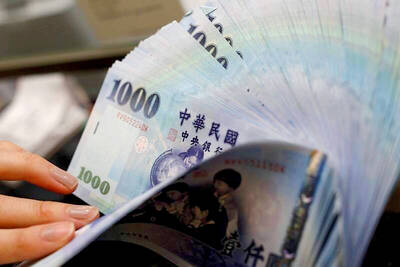Gap Inc is splitting into two.
The retailer on Thursday said that it is creating two independent publicly traded companies — low-priced juggernaut Old Navy and a yet-to-be named company, which would consist of the iconic Gap brand and Banana Republic, as well as lesser-known names Athleta, Intermix and Hill City.
The spin-off would enable each company to focus on flexibility and pare down costs, the San Francisco-based company said.
The company also said that it would be shuttering 230 Gap brand stores over the next two years.
A year ago, the Gap brand had 725 stores worldwide. After the closures, which also include the 68 stores it shuttered this year, the chain would be down to roughly 427 stores.
It expects to have more than 40 percent of Gap’s business coming from online after the restructuring.
Gap’s stock surged 25 percent in aftermarket trading.
The split, which followed a comprehensive board review, comes as Old Navy has been thriving, while Gap still has not been able to regain its footing, despite numerous attempts to fix the business.
Once the go-to place for casual clothing, Gap has been mired in a sales funk for years, hurt by increasing competition from the likes of Target Corp and Amazon.com Inc.
Analysts applauded the move.
“This is great news for Old Navy, no longer having its success consistently outweighed by sluggish performance by Gap,” Kantar Consulting senior analyst Tiffany Hogan said.
“But for the Gap, this seems like potentially a last significant effort to help the brand find its place in a market where it has lost relevance,” she said.
Gap’s overall sales at stores open at least one year were down 1 percent during the fiscal fourth quarter.
By division, the Gap brand posted a 5 percent drop, while that figure at Banana Republic was down 1 percent.
Old Navy posted sales that were unchanged from a year earlier, but that was on top of a 9 percent gain in the year-ago period.
“It’s clear that Old Navy’s business model and customers have increasingly diverged from our specialty brands over time, and each company now requires a different strategy to thrive moving forward,” Gap chairman Robert Fisher said.
Gap CEO Art Peck is to hold the same position at the new company after the separation, the company said.
Old Navy CEO Sonia Syngal is to continue to lead that brand as a standalone company, which has about US$8 billion in annual revenue.
The new company that Peck is to run has about US$9 billion in annual revenue.
During a conference call with investors on Thursday, Peck called the separation a “unique and catalyzing moment to simplify what we are doing and how we’re doing it.”
The separation deal is expected to close next year.
Gap’s shares rose US$6.50 to US$31.90 in extended trading after the split was announced.

Merida Industry Co (美利達) has seen signs of recovery in the US and European markets this year, as customers are gradually depleting their inventories, the bicycle maker told shareholders yesterday. Given robust growth in new orders at its Taiwanese factory, coupled with its subsidiaries’ improving performance, Merida said it remains confident about the bicycle market’s prospects and expects steady growth in its core business this year. CAUTION ON CHINA However, the company must handle the Chinese market with great caution, as sales of road bikes there have declined significantly, affecting its revenue and profitability, Merida said in a statement, adding that it would

Greek tourism student Katerina quit within a month of starting work at a five-star hotel in Halkidiki, one of the country’s top destinations, because she said conditions were so dire. Beyond the bad pay, the 22-year-old said that her working and living conditions were “miserable and unacceptable.” Millions holiday in Greece every year, but its vital tourism industry is finding it harder and harder to recruit Greeks to look after them. “I was asked to work in any department of the hotel where there was a need, from service to cleaning,” said Katerina, a tourism and marketing student, who would

i Gasoline and diesel prices at fuel stations are this week to rise NT$0.1 per liter, as tensions in the Middle East pushed crude oil prices higher last week, CPC Corp, Taiwan (台灣中油) and Formosa Petrochemical Corp (台塑石化) said yesterday. International crude oil prices last week rose for the third consecutive week due to an escalating conflict between Israel and Iran, as the market is concerned that the situation in the Middle East might affect crude oil supply, CPC and Formosa said in separate statements. Front-month Brent crude oil futures — the international oil benchmark — rose 3.75 percent to settle at US$77.01

RISING: Strong exports, and life insurance companies’ efforts to manage currency risks indicates the NT dollar would eventually pass the 29 level, an expert said The New Taiwan dollar yesterday rallied to its strongest in three years amid inflows to the nation’s stock market and broad-based weakness in the US dollar. Exporter sales of the US currency and a repatriation of funds from local asset managers also played a role, said two traders, who asked not to be identified as they were not authorized to speak publicly. State-owned banks were seen buying the greenback yesterday, but only at a moderate scale, the traders said. The local currency gained 0.77 percent, outperforming almost all of its Asian peers, to close at NT$29.165 per US dollar in Taipei trading yesterday. The